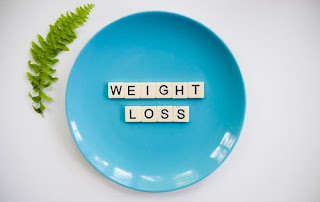If you've already
tried and failed to lose weight, you might think it's just too hard. But there
are successful ways to avoid common dietary traps, and to find delicious,
energizing and healthier options to fill. Here is what to do.
Firstly, bear in mind
that a lot of experts suggest it's best to slowly lose weight. A stay off is
more likely. When you shed pounds too quickly, the Academy of Nutrition and
Dietetics says you'll lose muscle, bone, and water instead of fat.
The Advice of the Academy
Focus at losing 1-2
pounds a week, and avoid fad diets or foods with claims that sound too good to
be true. It is best to focus your weight loss on improvements you will be able
to stick to over time.
Have a plan
You've always heard
the saying, "calories in, calories out;" ie, you just have to consume
more calories than you're eating and drinking.
Whatever approach you
use, you will need to choose good-for-you foods such as vegetables, fruits,
whole grains, and lean protein to maintain healthy nutritional properties. It's
a good idea to meet with a dietitian and you're making a program that will
address those needs.
Find out what you're
eating
You will need to
learn what makes you want to eat when you're not hungry, so you will need to
have a strategy for those occasions.
Next, aim to
recognize when those feelings are coming up and have a strategy ready to do
something else rather than feed. Can you go for a walk? Send an sms
to friend?
Finally, congratulate
yourself for having made a better choice. Using food as a reward should not be
a reward.
Update when and what
to eat
To lose weight, you
don't need to go vegan, gluten-free or leave any specific food category. In
reality, if it is something you can live with for the long term, you're more
likely to hold the pounds off for good.
Tweet
One easy way to
easily lose weight is to cut out liquid calories like soda, fruit and alcohol.
Substitute them with zero-calorie beverages such as lemon juice, unsweetened
tea or black coffee.
Compared to sugary
beverages, diet drinks will save you calories. But if you reach for a cookie or
other treat then because you're either hungry or you think you've saved enough
calories for it, the strategy will fail.
No matter how you
kick-start your weight loss, with long-lasting lifestyle improvements like a
balanced diet program, and physical activity are the only way to hold it off.
You may want to consult a registered dietitian if you are not sure where to
start, how much calories to cut, or how to do it safely.
It's important to note, when it comes to weight loss, there are no easy fixes.
Eating a safe, balanced diet is the easiest way to achieve and maintain a healthy weight.
It will include 10 servings of fruit and vegetables, protein of good quality and whole grains. Exercising at least 30 minutes per day is also helpful.
Takeaway
It's important to note, when it comes to weight loss, there are no easy fixes.
Eating a safe, balanced diet is the easiest way to achieve and maintain a healthy weight.
It will include 10 servings of fruit and vegetables, protein of good quality and whole grains. Exercising at least 30 minutes per day is also helpful.








0 Comments: